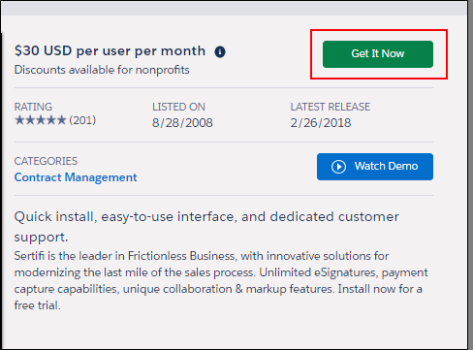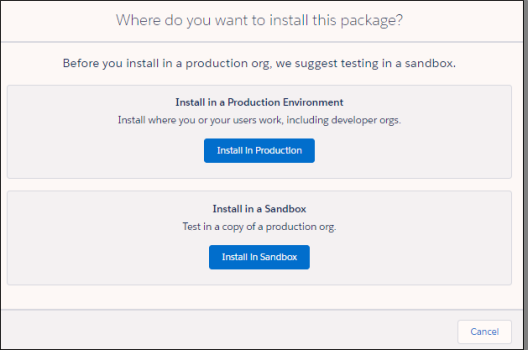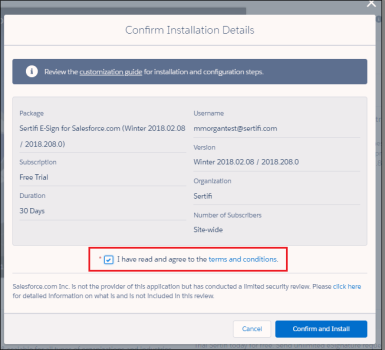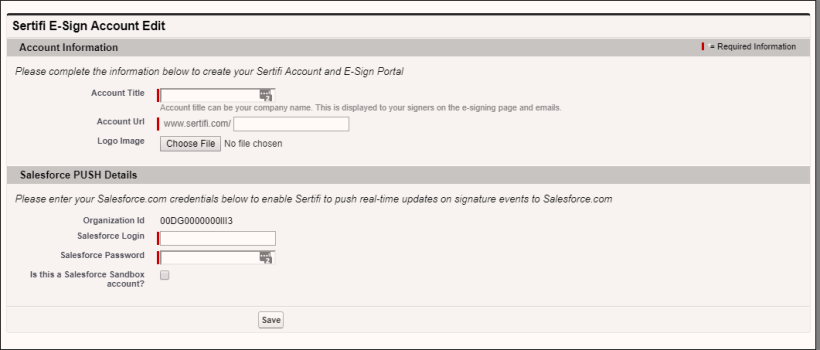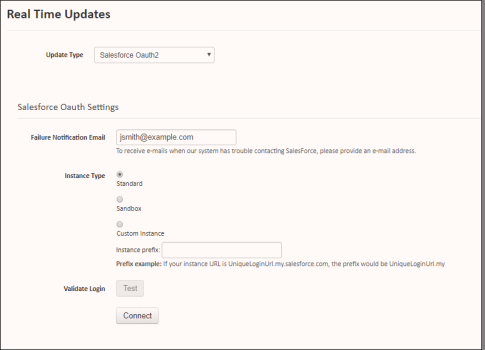Install and configure Sertifi for Salesforce
This article covers the installation and configuration steps for
This article contains the following sections:
- Downloading and installing the Sertifi app
- Adding the trusted Sertifi IP range
- Configuring your Sertifi Backend Portal
- Creating a lookup relationship
- Customizing your settings
- Enabling Real Time updates
- Next Steps
Downloading and installing the Sertifi app
To download and install the app to your Salesforce account:
- Navigate to the App Exchange in Salesforce, and then enter Sertifi. You can also download the app directly from Sertifi’s listing on the app exchange. Make sure you’re logged into your account.
- Click Get It Now on the Sertifi for Salesforce app screen in the app exchange. A popup window appears.
- Click Install in Production or Install in Sandbox depending on where you want to install the Sertifi app.
- Click Confirm and Install. You’re taken to your Salesforce instance.
- Click Install for All Users, and then click Install. A popup appears.

- Select Yes, grant access to these third-party web sites, and then click Continue.
- Select Yes for 3rd party access, and then click Continue. Sertifi appears in your Installed Packages section.
You receive an email when installation is complete. You can also skip ahead to adding the Sertifi IP range while your installation completes.
Adding the trusted Sertifi IP range
It’s important for you to add Sertifi’s trusted IP range. By doing this, Sertifi can write in and provide updates to signed documents, update your activity log, and push documents back into your system. To do this, Sertifi must be a part of your trusted IP ranges.
To grant network access:
- Enter Network Access in the Quick Find search bar from your Salesforce account.
- Click Network Access in the results.
- Click New in the Trusted IP Ranges card.
- Enter the IP range given to you by your Sertifi Customer Success Manager.
- Enter a description.
- Click Save.
You successfully added Sertifi’s trusted IP Range.
Configuring your Sertifi Backend Portal
Your Sertifi for Salesforce account comes with a custom backend portal. In this portal, you can access additional account settings to enhance your workflow within Sertifi for Salesforce. Once you complete the backend configuration, contact your Customer Success Manager, so you can view and manage these additional settings
To create your backend portal:
- Enter Installed Packages in the Quick Find search bar from your Salesforce account.
- Click Installed Packages in the results.
- Click Configure next to Sertifi ESign for Salesforce.com. A popup opens.
- Enter the following details in the Account Information section:
- Account Title – enter your company name.
- Account URL – enter your company name without spaces. This creates your custom portal URL. You'll use this URL to access your backend Sertifi portal.
- (Optional) Click Choose File to browse your machine and upload your company’s logo. The logo appears on your portal and is visible in your file sends, so all of your messaging is branded appropriately. You can send your logo to your Customer Success Manager to update any time.
- Enter your Salesforce username and password in the Salesforce PUSH Details section.
- (Optional) Click Sandbox if you’re installing the app in a sandbox environment.
- Copy and paste your API code in a separate window.
- Click Save, and then close the popup window.
Your Sertifi Backend portal is now set up. Contact your Sertifi CSM to provide you Super Admin user access.
Creating a lookup relationship
You must create a look up relationship to the Salesforce Quote as you install the Sertifi app to point the Sertifi button to the Quote. This ensures that you can send a quote document for signature, or other sending object.
To create a lookup relationship in Salesforce:
- Navigate to Create > Objects.
- Click Sertifi EContract under the Label field.
- Scroll down to Custom Fields and Relationships.
- Click New. The New Custom Fields and Relationship wizard opens.
- Select Lookup Relationship from the list, and then click Next.
- Select the first Quote from the Related To dropdown menu, and then click Next.
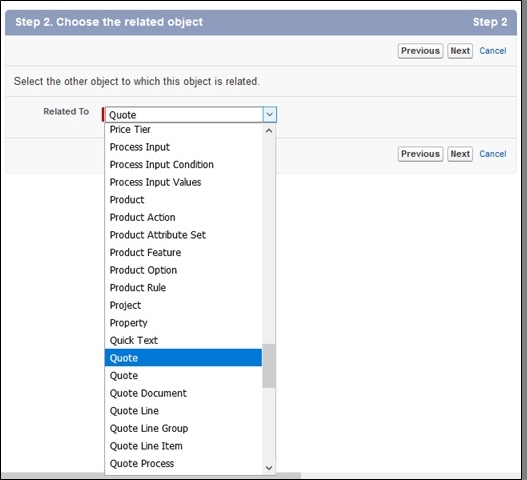
- Enter sertificpq__Quote for the Field Label.
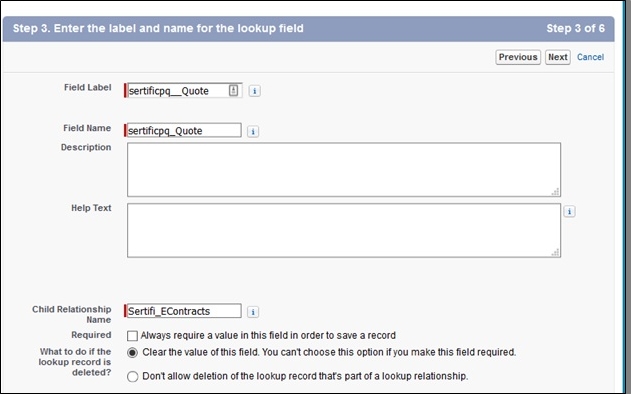
- Click into the Field Name box to auto-populate the field name, and then click Next.
- Click Next until you reach step 6 of 6 in the wizard.
- Click Save.
Customizing your settings
Once you finish configuring you backend portal, you must create the custom settings to ensure your app works properly. For more information about creating custom settings, see Customizing your settings for Salesforce CPQ. Once you finish creating these settings, navigate back to this article to enable real time updates and finish the setup process.
Enabling Real Time updates
You should enable real-time updates so your file sends push to your Sertifi portal for storage, and enable additional settings that live on your portal and requires Super Admin access to the Sertifi portal. If you haven't already, contact your Customer Success Manager to create you as a Super Admin, or contact [email protected] to make this request. For example, you can enable mouse/stylus/finger sign, set up reminder rules, and other features.
To enable real-time updates:
- Login to your Sertifi Portal using the URL you created when setting up your app in Salesforce.
- Click Administration > Account Settings > Real Time Updates.
- Change the update type to Salesforce OAuth2.
- Enter an email address in the Failure Notification Email field.
- Select the Instance type, and then click Connect. A new tab opens.
- Enter your Salesforce credentials.
- Click Allow.
You’ve successfully installed and set up your Sertifi app for Salesforce. You’re taken back to your Sertifi Portal and now see a green bar stating Connected.
Next Steps
Once you complete the setup of the Sertifi application, move to the second phase of the process and install and set up the Sertifi for Salesforce CPQ extension package.
